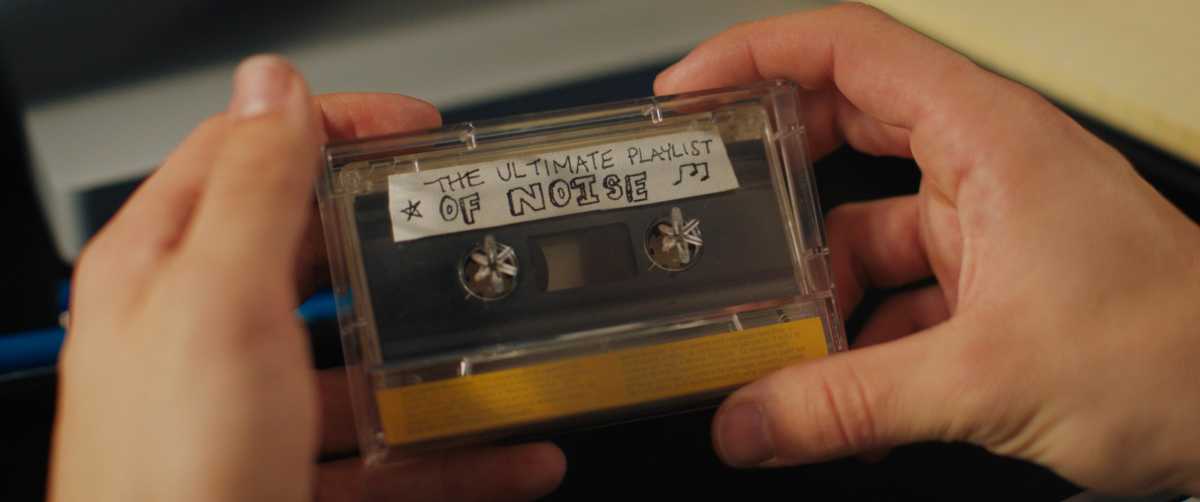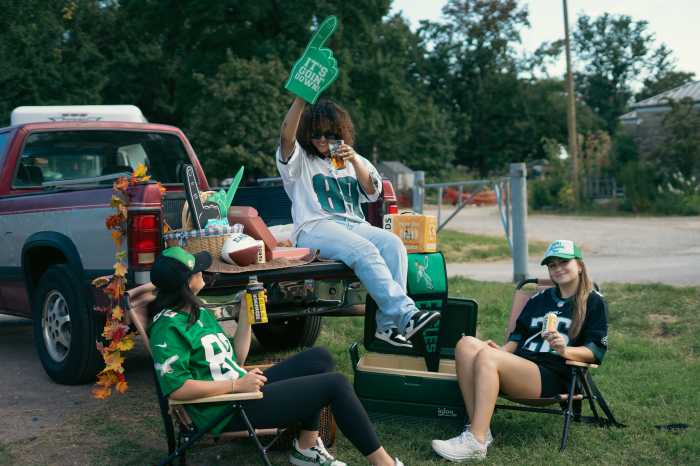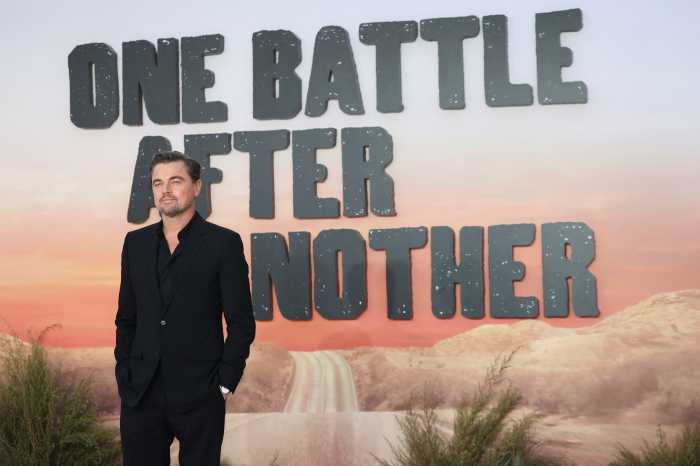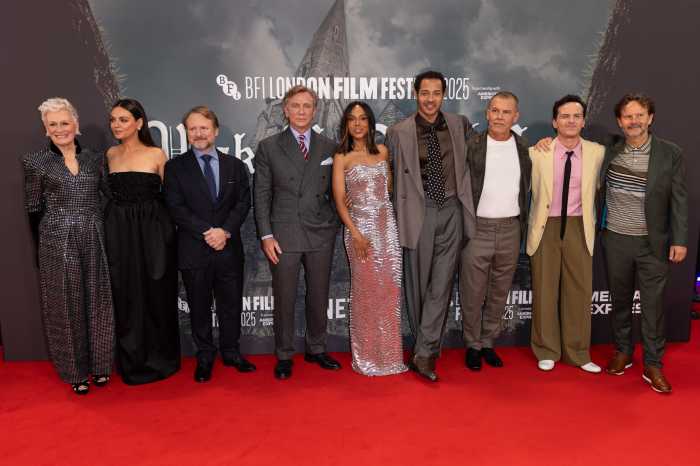“It’s the little things”— most of us have heard that said in our lifetime, but do we really pay attention to what those “little things” really are?
That exact line of questioning is what helped fuel director Bennett Lasseter to sign on with Hulu’s latest film starring Keean Johnson and Madeline Brewer, ‘The Ultimate Playlist of Noise.’ The film follows Marcus (Johnson) as a high school student who receives life-changing news that after finding a tumor, he needs to have surgery which will lead to the loss of his hearing. Being someone who is in love with sounds and the way they can make you feel as an escape —or as his character says his only escape — it’s a huge deal.
When Johnson’s character sets out on a road trip with Brewer’s character (the impulsive and beautiful Wendy), audiences are really able into what Lasster wanted the film’s message to be: Appreciate those moments and connections in life, because that’s what it means to be human.
Lasseter sat down with Metro to discuss more about what went into making this film.
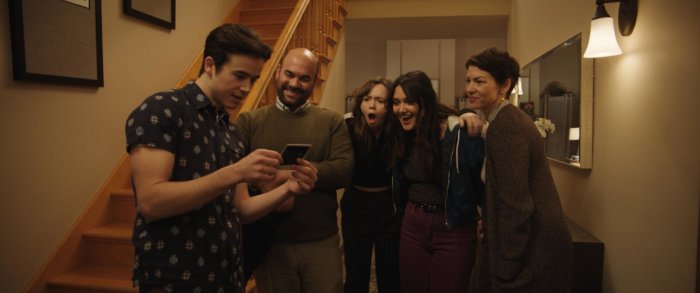
What was the initial draw for you with this story?
From the moment I read the script, I was pretty emotionally struck with what Mitchell [Winkie], the writer had done. I think I really bonded with the small moments, particularly one with Marcus and his mother where they connect over a small, little sound and the idea of those little sounds kind of becoming those memories that you hold onto and could even define you as a person. I started looking at the rest of the script with that lens of what do all these sounds mean and all of these little moments mean to the character? [I] really dived into the emotionality of each individual sound and what it would be like to say goodbye to it—that was really a great creative drive and interest to me early on.
What went into casting for this film? Especially for the characters of Marcus and Wendy?
Hulu helped out a lot with casting. We took a while to find the right Marcus because I think the character is a little bit more on the subtle side. He’s that kid you would know in high school and he knew everybody and everybody liked him, but he wasn’t the most popular kid or was trying to be—he has his own interests and his own world doing his thing. He’s very comfortable, but in the minor layers of that there is insecurities, and a really good sense of raw humor and we’re just trying to balance all of that out.
So when we found Keean it was clear that he had all of those idiosyncrasies that we were looking for and he brought even more to the table than we expected. Then when Madeline Brewer came across the table it was really exciting. I saw a tape of her singing and Wendy has a singing part, she’s already also in the Hulu family with ‘Handmaid’s Tale’ so it all made sense. Getting Keean and Maddie together was [also] really exciting because they brought a lot to the table together. They come to set with these little beats worked out and these moments that I would have never thought of as a director.

You’ve worked in different parts of the film industry. Has that experience influenced your directing style?
Yes, and it was kind of just figuring out how to capture the most with whatever you had, regardless of the tools or budget. It’s just trying to hone in on the right ideas and making sure the team around you are all working towards that same idea regardless of who’s idea it was to begin with. It’s building off of that and always chasing down what’s best for the story and making sure that concept and that notion of the story is dictating everything and every decision that we’re making. I think my role as a director is to tell the story in the best possible way. What that means is being the ultimate decision-maker and deciding which idea really connects with what we’re trying to express. Whether it’s camera positioning, staging, or sound editing and mixing—just trying to figure out how we can connect with our viewers and express that fundamentally human emotion that we’re trying to capture.
When you’re getting the actors ready for these emotional scenes, what do you try and do as a director to get the actors ready?
I think a lot of the director’s job is casting people who are prepared to come to set and do that emotional work. I try to get involved with preparation as little as possible, because it’s a very deep-rooted thing to go through. They’re living through truthful imaginary circumstances, so while their job is to act, they are putting themselves through that trauma and through those moments.
I want to not be at all invasive and give them as much space as they need, so I’m very keen on keeping the set quiet to remove any distractions and I’m trying to give them the free space and security so that if they have any questions, I’m there. I just try to match the tone of the setting and just really let them run with it and take all of the work they prepared and lay it out on the table. My job is simply just, emotionally speaking, guiding them by touching their shoulder softly and positioning them. It’s just really [small] touches to a lot of the actors who bring the powerful performances.
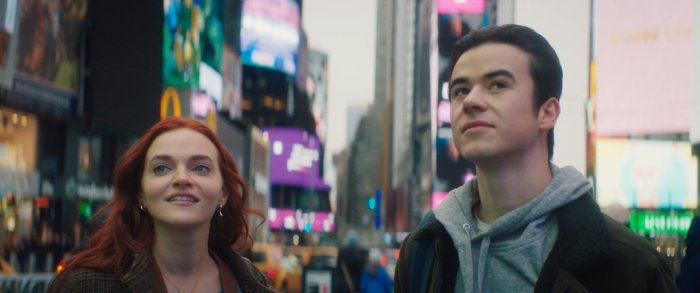
Were you most excited to see one particular scene come to life onscreen?
I think it was really fun filming in downtown Syracuse and trying to find niche’s of Brooklyn and New York City while tying them into that half day we had in NYC with a small crew and Keean and Maddie. After we edited it together, it was fun to see all of those lines [of filming] blurred together, it gets really hard to tell which one is Syracuse and which one is New York City.
I think that my ultimate favorite scene though is on a bridge at night with Keean and Maddie, they’re kind of relating to each other on an honest level and I think they both brought some of the best performances I had ever gotten out of actors. We had a lot working against us that night with electrical problems with lights and the temperature dropping, and yet we captured something really human and beautiful and it was a lot of fun. Then the composer put this perfect score to it that makes the scene just pop and it really gets me excited every time it comes onscreen.
What do you hope audiences take away from the film overall?
My draw to the script was in the little moments that can become profound in defining you as a person and become a very powerful and emotional memory for you. I’m hoping that after seeing this film, people really reflect on those moments in their lives and those little moments that have deep meaning for them. Moving forward, I’m really cognizant about not taking it for granted and appreciating those things—saying goodbye to somebody as they go to work, or just getting to sit on the couch with your dog. Just those little, tiny moments that you sit there—it’s important to live in those moments fully and having those little connections because I think that’s what it means to be human.
“The Ultimate Playlist of Noise” premieres Jan. 15 on Hulu.



